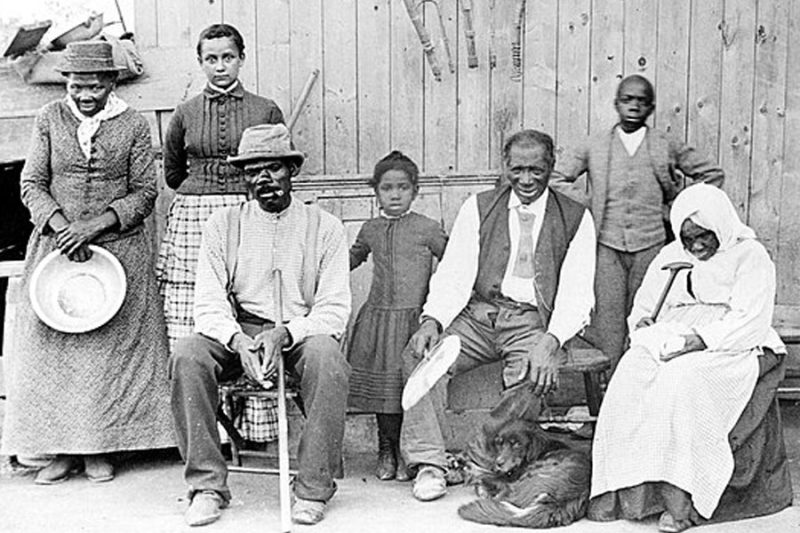Basic Information
| Field | Information |
|---|---|
| Name | Harriet Greene Ross |
| Also known as | Harriet “Rit” Greene Ross |
| Born | c. 1790s (exact date not recorded) |
| Birthplace / Location | Dorchester County, Maryland |
| Social status | Enslaved (domestic worker / cook) |
| Partner / Husband | Benjamin “Ben” Ross (manumitted; timber worker/foreman) |
| Notable child | Araminta “Minty” Ross (Harriet Tubman) |
| Children (selected) | Linah, Mariah “Ritty”, Soph (Sophia), Robert, Araminta “Minty”, Ben Jr., Rachel, Henry, Moses |
| Documentary anchor | Midwife payment record tied to March 1822 (used to estimate daughter’s birth) |
| Death | Not reliably recorded |
Life, Labor, and the Domestic World That Made a Rebel
I like to imagine Harriet Greene Ross as the steady, unseen current beneath a river that would later split the continent — she is both the quiet water and the force that moves the stones. Born in the closing years of the 18th century, Rit lived in Dorchester County, Maryland, bound to the domestic rhythms of the Brodess household. There is no neat ledger of her life — that absence is its own historical punctuation — but the threads we do have form a texture: a woman who was a mother, a cook, a domestic laborer, and a keeper of a household under the constant threat of sale and separation.
Numbers anchor a surprising amount of what we can say with confidence: a midwife payment dated mid-March 1822 is one of the documentary pins historians use to date the birth of Araminta “Minty” Ross (who would take the name Harriet Tubman). Around 1808 Rit and Ben are said to have formed a household together — an early 19th-century union under the law of slavery, tender and precarious. Ben’s later manumission and his work as a woodsman and foreman ripple through the family story: he is the man who, by some accounts, secured land and tried to shield his kin from the worst predations of the slave market.
But Rit’s life was shaped by the invisible labor of the enslaved — cooking, cleaning, mending, raising children and patching broken spirits — the kind of work that does not appear in bank books but built the daily world. When a trader once tried to buy her youngest son, Moses, family lore says Harriet resisted fiercely; that single, human detail reads like a scene from a film noir — close, breathless, and bright with moral clarity.
The Ross Family — Introductions Around the Kitchen Table
Below is a compact portrait roster — think of these as the family credits rolling under the main title.
| Family Member | Relation & Brief Introduction |
|---|---|
| Benjamin “Ben” Ross | Partner/husband; manumitted, worked as a woodsman/foreman, later associated with land acquisition and local standing. |
| Araminta “Minty” Ross (Harriet Tubman) | Daughter; born c.1822, escaped slavery in 1849 and became the famed conductor of the Underground Railroad. |
| Linah (Lina) Ross | Daughter; named among the Ross siblings and part of the family group fragmented by sales. |
| Mariah “Ritty” Ross | Daughter; listed in family records as one of Rit’s children. |
| Soph (Sophia) Ross | Daughter; recorded among siblings who endured the constant risk of being sold. |
| Robert Ross | Son; part of the extended Ross sibling list in Dorchester County records. |
| Ben (Jr.) Ross | Son; recorded in local family histories. |
| Rachel Ross | Daughter; one of the Ross children named in genealogies. |
| Henry Ross | Son; included in family lists. |
| Moses Ross | Son; youngest and central to family anecdotes about resistance to sale. |
| Gertie Davis | Adopted granddaughter (by relationship): later adopted by Harriet Tubman and Nelson Davis, she represents the generational continuation of the family’s story. |
Family life for Rit was a series of starts and stops — births in the house, sales at market, the constant negotiation of love and loss. Imagine a quilt stitched from torn pieces: every patch is a person, some threads strained nearly to breaking.
Work, Wealth, and the Limits of Record
Talking about “career” and “net worth” when it comes to Harriet Greene Ross is like trying to measure sunlight with a metal ruler. Rit’s labor was domestic and compulsory — her skills in cooking, childcare, and household management were essential, but they were recorded in the language of ownership, not of wages. The modern idea of net worth doesn’t map onto her life: enslaved people were legally treated as property, and so personal financial records for Rit herself do not exist.
That said, the family’s material circumstances shifted in small, important ways: Ben Ross’s manumission, his work in the timber trade, and reports of land acquired through a will or local transactions meant the Ross household sometimes occupied a sliver of security that many families never saw. Still, those facts do not translate into a personal balance sheet for Harriet — instead, they are markers of resilience amid structural dispossession.
Numbers, Dates, and the Small Documents That Speak Loudly
| Item | Date / Number |
|---|---|
| Estimated birth decade | 1790s |
| Marriage / partnership (approx.) | c.1808 |
| Midwife payment linked to daughter’s birth | Mid-March 1822 |
| Number of children (commonly cited names) | 9+ (Linah, Mariah, Soph, Robert, Araminta, Ben Jr., Rachel, Henry, Moses) |
| Significant family event | Attempted sale of Moses (family resistance remembered in oral histories) |
Those small items — a midwife’s signed receipt, a manumission notice, an oral memory — are like film stills: grainy, partial, but enough to conjure a scene.
Legacy, Memory, and Modern Resonance
I’ll admit: part of my fascination with Rit is how she exists both as a named individual and as a locus for a larger American story — family, bondage, resistance. Today her name surfaces mostly in the orbit of Harriet Tubman; museums, archaeological digs on Dorchester land, and community historians point to Rit whenever they stitch together the early scenes of Tubman’s life. There are no tabloid dramas, no gossip columns; the mentions are reverent, archaeological, genealogical — the modern world leaning close to listen.
FAQ
Who was Harriet Greene Ross?
Harriet Greene Ross — often called Rit — was an enslaved woman in Dorchester County, Maryland, best known as the mother of Araminta “Minty” Ross, who became Harriet Tubman.
When was she born?
Her birth is commonly estimated in the 1790s; exact dates were not recorded in surviving documents.
Who was Benjamin “Ben” Ross?
Ben Ross was Rit’s partner, a skilled woodsman and foreman who was later manumitted and associated with efforts to protect and provide for the family.
How many children did she have?
Historical lists and family records name at least nine children or close kin (including Linah, Mariah, Soph, Robert, Araminta, Ben Jr., Rachel, Henry, and Moses).
Is there a recorded death date for her?
No reliable death date for Harriet Greene Ross has been documented in the surviving public record.
Did she own property or have a net worth?
As an enslaved person, she could not legally own property; there are mentions of Ben’s later land connections, but Rit herself has no modern-style net worth record.
How is she remembered today?
She appears most often in family histories, museum narratives, and archaeological contexts as the mother of Harriet Tubman and as a woman whose domestic labor underpinned a family that would resist bondage.
Are there dramatic scandals or gossip about her?
No — modern references to Rit are historical, commemorative, and genealogical rather than scandalous or sensational.






